After fleeing violence, refugees in Ethiopia struggle with hunger
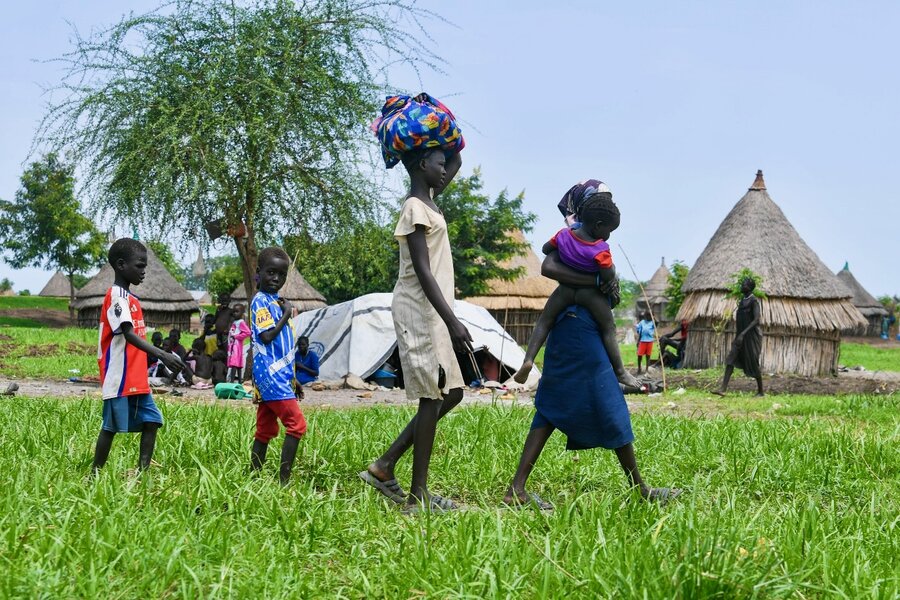
Nyibol and her four children crossed from their native South Sudan into Ethiopia last April, feeling weak from hunger. It had been days since their last meal.
“My children are small; the journey was difficult for them,” recalls Nyibol, describing struggling with sickness during a two-week long journey
“They kept asking me ‘Mama, where are we going?’ I told them, ‘to a safe place,’” she adds. (As a refugee, Nyibol’s last name is being withheld for her protection).
While Nyibol’s family has escaped unrest in their homeland, they face new hardship in Ethiopia’s western Gambella Region, where they found shelter. A severe funding shortfall is forcing the World Food Programme (WFP) and other humanitarian agencies to sharply shrink food and other assistance to hundreds of thousands of refugees in the country.
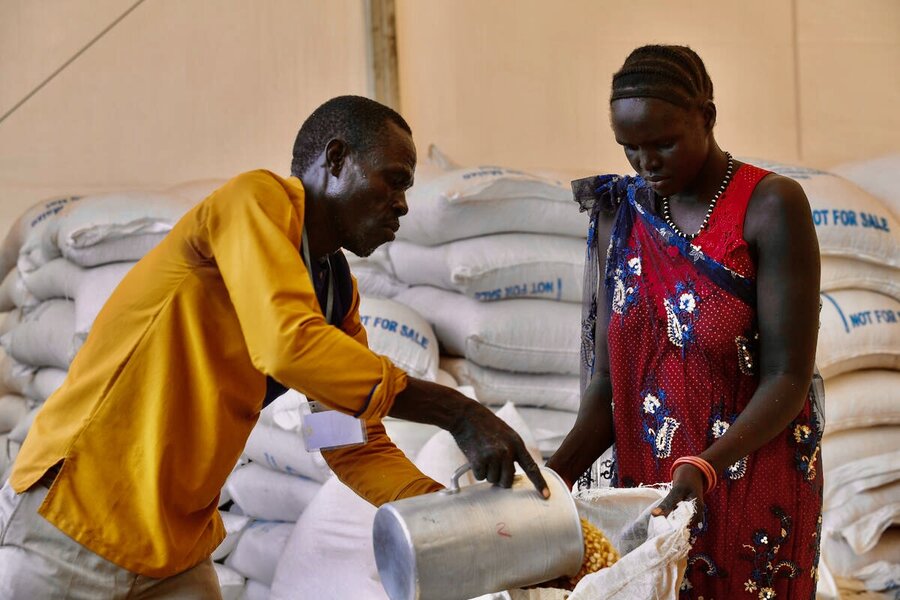
Although WFP was the first humanitarian agency to respond to this year’s latest influx of South Sudanese asylum seekers - providing nutritious, ready to eat, high energy biscuits to people who walked days without food - the funding cuts are now impacting predictable, longer-term food assistance.
“Without immediate funding for the acute food needs, tens of thousands of people arriving from South Sudan - with no alternatives to sustain themselves - risk losing access to the immediate food needs and support that keeps them alive,” says Zlatan Milisic, WFP Ethiopia Representative and Country Director.
The cuts also threaten WFP’s programmes promoting livelihood opportunities and resilience among both refugee and host communities, Milisic says. “Urgent resources are needed now to cover critical food needs and prevent an already fragile situation from sliding into deeper crisis,” he adds.
Refugees at risk
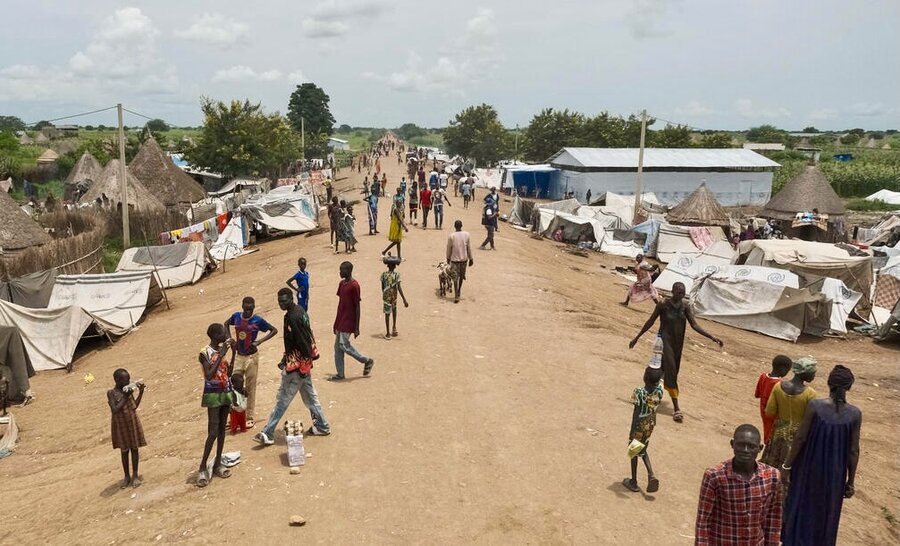
Those at risk include refugees like Nyibol and her family, who count among some 70,000 South Sudanese who have arrived in Gambella since February. The region now hosts approximately 440,000 South Sudanese refugees, spread across seven settlements. Most have fled South Sudan’s Upper Nile State in search of safety, as renewed violence continues to claim lives and destroy livelihoods.
“We are seeing families who have walked for days, often with nothing but the clothes on their backs,“ says Kudzayi Mazumba, Head of WFP’s Gambella office. “Many of the refugees are women, children and the elderly and they arrive hungry, exhausted and malnourished.”
The funding cuts have forced WFP to sharply reduce food rations to longstanding refugees this year — and, as of October, to further reduce the rations. Today, they receive food assistance equivalent to just 1,000 calories a day — or just 40 percent of the minimum recommended daily intake.
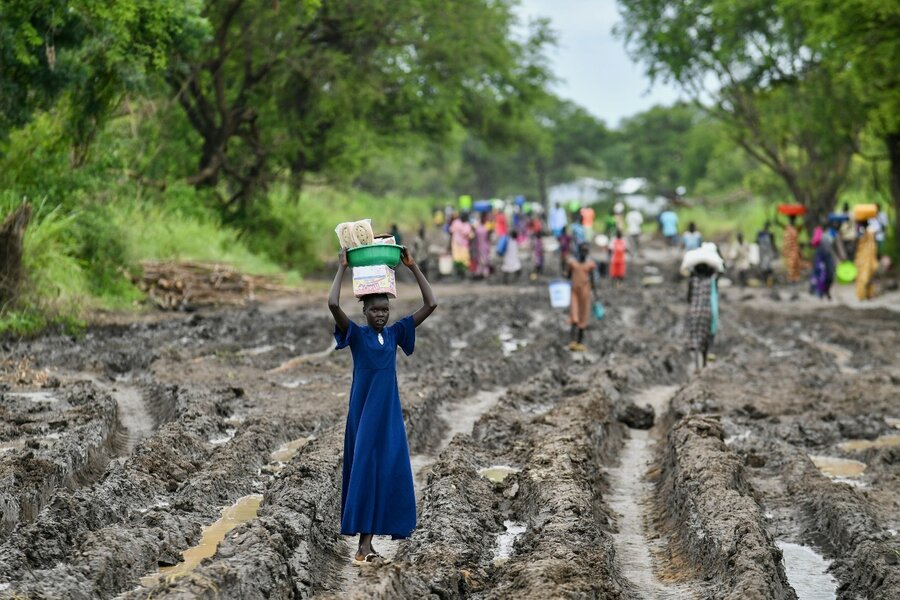
The cuts are part of global aid reductions that are deepening hunger and malnutrition. A WFP report earlier this month found the drop in assistance to our operations alone risks pushing 13.7 million more people into emergency food insecurity — the second-highest hunger level set by the Integrated Food Security Phase Classification, the global authority on food crises.
In Ethiopia, shrinking rations are driving up malnutrition rates in the refugee camps, humanitarians say. With limited opportunities for work, and few other fallbacks, they say, many of the refugees resort to harmful practices, such as skipping meals, selling precious possessions and working in exploitative jobs.
Even newcomers like Nyibol — who for now, receive full WFP rations - face uncertain futures.
“We are still waiting for the safety I promised my children,” says Nyibol. “One of my children is being treated for malnutrition. We are in desperate need of food, shelter and water.”
A welcome meal
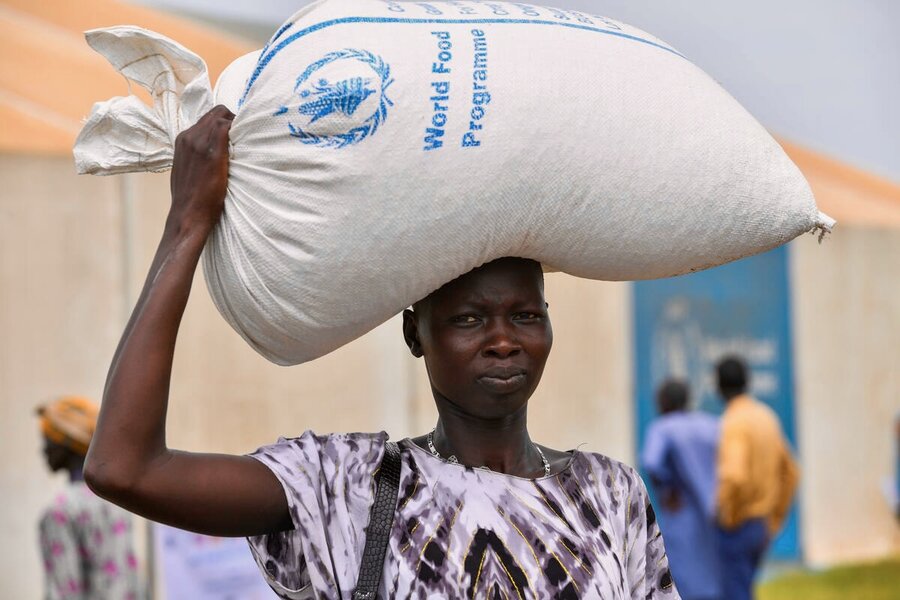
“These conditions underscore the urgent need for a coordinated, multi-sectoral humanitarian response,” says WFP’s Milisic. Instead, the funding cuts have further constrained the ability of aid agencies to provide essential food, medical care, educational support and other key services.
Seasonal rains are further complicating the humanitarian response to refugees like Nyibol. They have almost severed access to the small Ethiopian town of Matar, some 30 kilometres from the South Sudan border, where many refugees live in makeshift settlements.
The Ethiopian Government and humanitarian partners are coordinating efforts to set up new camps and register new arrivals. Beyond the immediate high-energy biscuits, WFP provides them with a monthly food basket of cereals, pulses, cooking oil and salt for the first six months. Mothers and young children also receive a fortified soya bean blend to help combat malnutrition.
But without a massive and rapid influx of contributions, support for all refugees in Ethiopia will run out by the end of December - leaving many with few options.
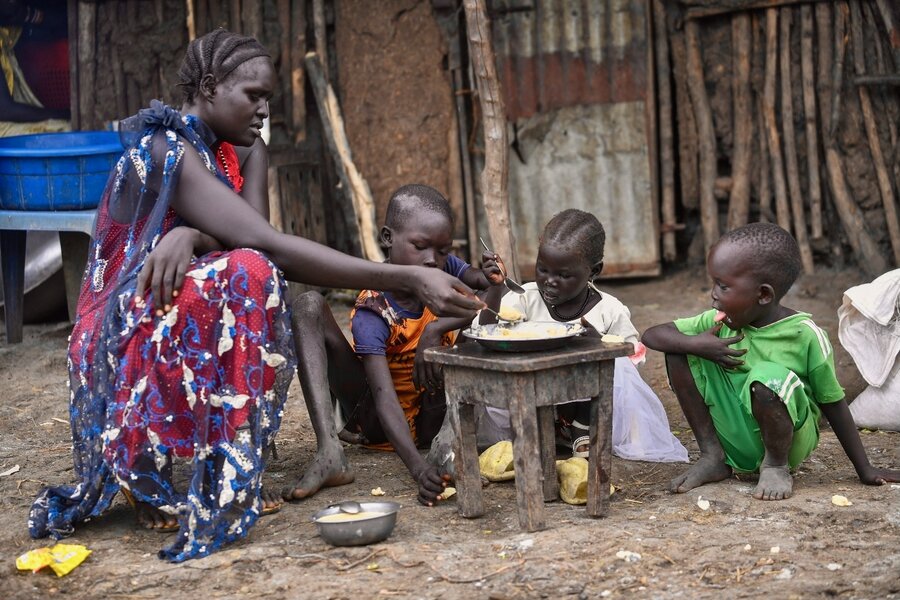
“This is the first time I’ve prepared this meal for myself and my children,” says another South Sudanese mother, Nyantut, after receiving a family food basket for her family, including her sister’s two children.
A mother of three, Nyantut fled eastern South Sudan’s Nasr County in May, after her sister and husband were killed in an aerial bombardment. She made a days-long walk to Ethiopia with all five young children.
She tears up as she talks about losing her family.
“My niece and nephew don’t know what happened to their mother,” Nyantut says. “I don’t know what to tell them.”
“For now, we are safe,” she adds. But it’s uncertain for how much longer.
WFP's refugee operations in Ethiopia are supported by Canada, Denmark, the European Commission, France, private donors, the Republic of Korea, Saudi Arabia, Sweden, UN CERF, the United Kingdom and the United States.
